The demand for cocoa in Europe is very high due to its multiple uses. Cocoa producers process the seeds to obtain the five most demanded products in the food and cosmetic industries: liquor, butter, paste, powder, and chocolate. In addition to making creams, soaps, beverages, and desserts, the shells are used for animal consumption, due to their high fiber content, or as raw material for organic fertilizer.
Cocoa imported by Bull Importer
Bull Importer manages cocoa importation in all formats. Our suppliers, located in Africa, South America, and Asia, produce the Criollo, Forastero, and Trinitario varieties, which supply the food and cosmetic industries.At Bull Importer, we work with cocoa manufacturers, suppliers, and distributors. The main countries from which we manage importation are Bolivia, Brazil, Colombia, Costa Rica, Cuba, Ecuador, Grenada, Guatemala, Honduras, Jamaica, Mexico, Nicaragua, Panama, Peru, Dominican Republic, Trinidad, Venezuela, Ghana, Madagascar, Sao Tome, Tanzania, Sri Lanka, Philippines, Indonesia, Papua New Guinea, and Vietnam. We work with verified suppliers with export licenses for all varieties.The most requested formats by our clients are:
- Beans
- Butter in blocks or pieces, roasted or unroasted
- Paste (liquor) in blocks or pieces, roasted or unroasted
- Nibs, roasted or unroasted
- Roasted or unroasted powder
- Shells
All these varieties can be imported with different degrees of purity, from 40% to 100%, conventional or organic. Minimum orders vary depending on the chosen variety for importation.
Cocoa Quality Factors Linked to the Food Industry
The determining factors of cocoa quality are genotype, climate, soil, phytosanitary management, and post-harvest technology. Different qualities are produced based on these variables, targeting different industries. Taste and aroma depend on the seed variety as well as the fermentation, drying, and roasting process. The same variety can result in products with very different characteristics.The roasting process and temperature, along with organic acids, influence flavor. African beans are less rich in acids than those from South America and Asia. The cocoa industry employs different processes to vary these parameters and obtain a final product according to importers’ needs.
Cocoa Varieties
Originally, there were only two cocoa varieties in the world: Criollo and Forastero. The crossing of these two species resulted in Trinitario cocoa, and subsequently, different hybrids were achieved, which are known today.
Criollo
Criollo cocoa, or “sweet cocoa,” comes from Central America, Colombia, and Venezuela. It is distinguished by its soft-shell fruits and sweet seeds ranging from white to violet. It is usually reserved for the production of high-quality chocolates. Only 10% of the world’s cocoa production is of the Criollo variety.
Forastero
The Forastero, or “bitter,” variety originates from South America and is the most cultivated in Africa and Brazil. It is distinguished by its hard-shell fruits and purple seeds. The best producers use this bean to add body to blends.
Trinitario
The Trinitario variety comes from the crossing of Criollo and Forastero varieties. Currently, most production is of this variety. It is the name given to all hybrids.
Organic
Organic chocolate is made using cocoa not treated with synthetic fertilizers, herbicides, or pesticides. All other ingredients used in the blend must also be organic to carry the “Organic” label.The international demand for organic cocoa has increased considerably in recent years compared to conventional cocoa, especially in Europe, which accounts for 50% of global production imports. According to Leatherhead International Limited, a company specialized in food research, the British organic chocolate market is the largest in the European Union.



